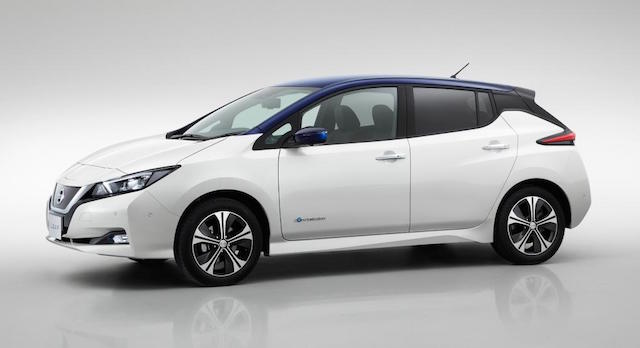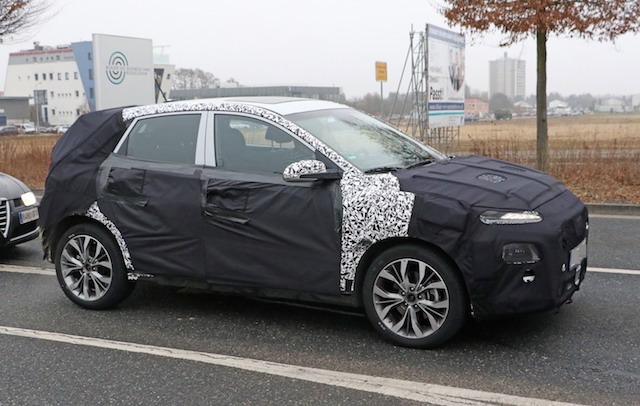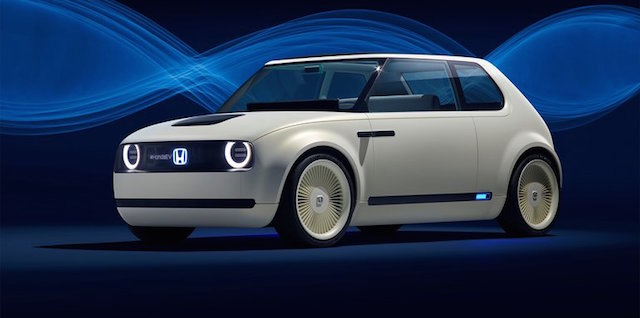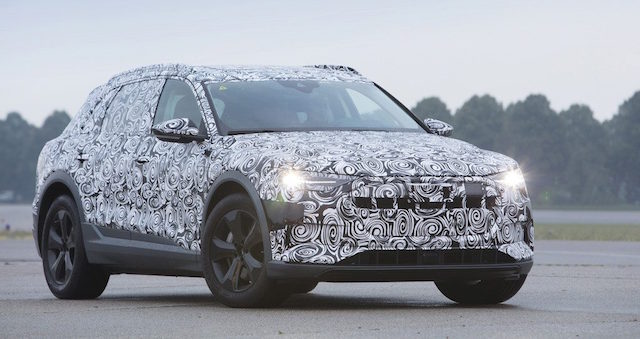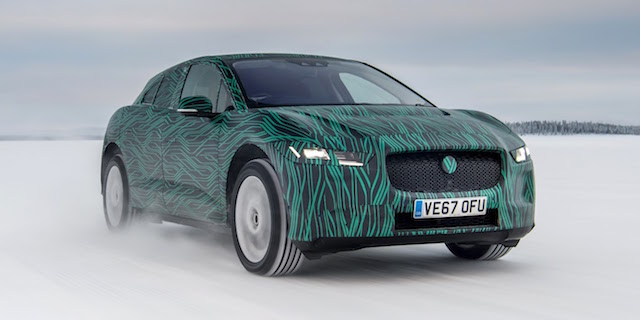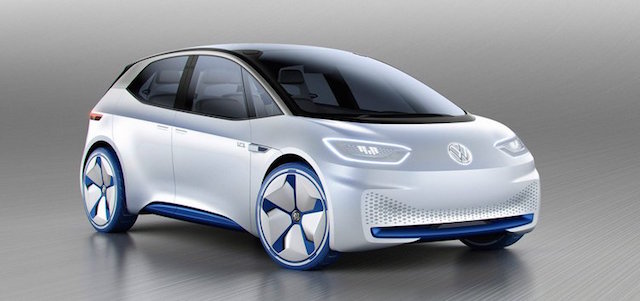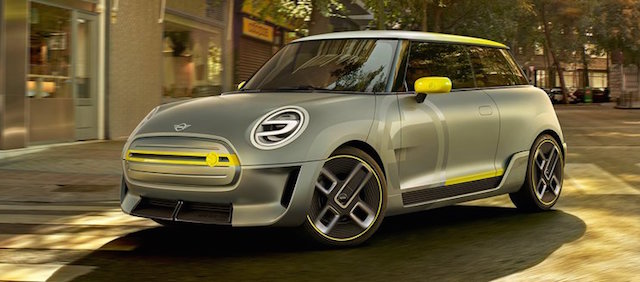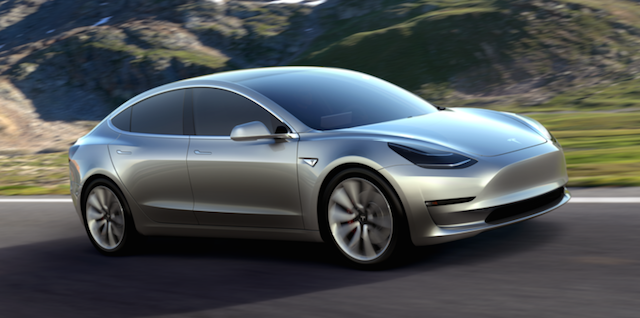
The public relations hype claims New Zealanders are buying Plug-in Hybrid Electric Vehicles (PHEVs) and Battery-Electric Vehicles (BEVs) at a rate faster than Europeans. Whatever, the electric vehicle (EV) numbers in this country are indeed growing. Here’s a brief look at current and future EVs.
Tesla began Model 3 (above) production last August and planned to ramp it up to 5000 cars a week by December. But delays with battery assembly has pushed back the company’s target till June. Model 3 battery packs aren’t the same as those in the Model S or X. The problem, Tesla CEO Elon Musk has said, is logistics – the battery production plant is in Germany and the battery assembly plant half a world away in the US state of Nevada, at Tesla’s Gigafactory. The packs have to be disassembled in Germany before being shipped to the Gigafactory and reassembled. In standard form, the Model 3 has a reported range of 355km. A more powerful version is apparently good for 500km. It is not known when the Model 3 will land in NZ.
The original Leaf first appeared on NZ roads in 2010. It was the first to offer affordable zero-emissions motoring in a hatchback that looked like a conventional hatchback. But the price of around $80,000 stopped it dead. Since then much cheaper used Leaf imports from the UK and Japan have been steadily growing in numbers. The second-generation Leaf (above) brings added power and range, along with a host of semi-autonomous driving technologies, called ProPilot. Battery power is up 10kWh to 40kWh for a claimed range of around 400km, and the electric motor puts out 110kW/320Nm. The new Leaf will be available in NZ.
The only big electric cargo van on the road in NZ is the Chinese-built LDV EV80 (above). LDV is the van arm of SAIC Motor Corporation, China’s biggest carmaker. The EV80 is the zero-emissions version of the diesel-powered V80 and is good for a fully-charged range of around 180kW from its 56kW-h lithium-iron-phosphate battery pack. It joins the LDV carry-all fleet and is priced from around $80,000. LDV marketing manager Warren Willmot says NZ companies have ordered 10 EV80s, either as cargo vans or converted mini-buses.
The battery-electric (EV) Hyundai Ioniq has been in NZ for some months. Next up, but we don’t know when, is the Kona, the EV version (above) of the compact Hyundai SUV. It will be officially unveiled at the Geneva motor show next month. Company executives in South Korea last year said they were targeting a range of around 470km. Nothing yet about the EV Kona’s outputs and battery capacity, but it’s expected to be a beefier set-up than that of the 88kW/295Nm Ioniq EV with its 28kWh battery and 200km range. There is also a hydrogen fuel-cell Kona in the works.
The retro styling of the Honda Urban EV (above) was a crowd-stopper at last year’s Frankfurt motor show, most of all because it recalled the look of the original Civic. Honda didn’t talk about battery capacity, or the car’s range, but its executives did confirm the Urban EV would go into production for the European market in 2019. Features of the concept include retro-inspired wood trim inside with grey fabric upholstery, a massive panoramic display that incorporates the driver’s instruments and central infotainment system, along with side-view cameras rather than conventional mirrors.
The Audi e-tron quattro SUV (above) is due to be unveiled in Europe this year, although it is not known when it will be available in NZ. There has been talk that it may even land here late this year or early next, after Audi Australia confirmed it plans to launch an all-electric SUV around the same time. Think of it as a rival to the Tesla Model X and Jaguar I-Pace. The concept e-tron quattro delivered around 370kW of power and 800Nm of torque in trials, with a claimed 0-100km/h sprint time of 4.6 seconds. Audi also claimed a zero-emissions range of upwards of 500km.
Jaguar NZ importers Motorcorp Distributors have confirmed the I-Pace SUV (above) will be available here next year. It will be publicly unveiled in the UK in a few weeks, just before the Geneva motor show. No NZ price yet. What is known is it’s all-wheel-drive and its 90kWh battery pack, says Jaguar, is capable of being charged via 100kW DC fast charging outlets from zero to 80 per cent capacity in “less than 45 minutes”. Jaguar hasn’t said much about power, although it did claim a concept shown last year delivered 294kW/700Nm and had a range of 500km.
One of the first of 30 EVs Volkswagen has pledged to deliver by 2025 will be a production version of the I.D. concept (above). The hatchback is based on the company’s new MEB platform (Modular Electrification Toolkit) and is likely to go global in 2020. It is said to be around the same size as the Golf but with interior space rivalling the Passat. The I.D. concept was unveiled at the Paris motor show in 2016 with a 125kW electric motor offering a claimed range of 400-600km.The hatchbatch is one of a future family of I.D. vehicles, including the I.D.Buzz, a remake of the Kombi.
The Mini Electric Concept (above) appeared first at the 2017 Frankfurt show, where BMW’s Mini division confirmed it previewed the all-electric Mini due in 2019. The Mini Cooper EV will be pretty much based on the current car, but without a petrol engine under the bonnet. It will also carry the company’s new ‘E’ logo, which resembles a three-point power plug. Expect the EV Mini to be more powerful and offer a longer range than the 2008 Mini E, which had a 150kW/220Nm electric motor and a range of 240km.

